
Why You Should Be Cooking with Indigenous Ingredients at Home
Crystal Wahpepah shows us how to cook with Native ingredients.
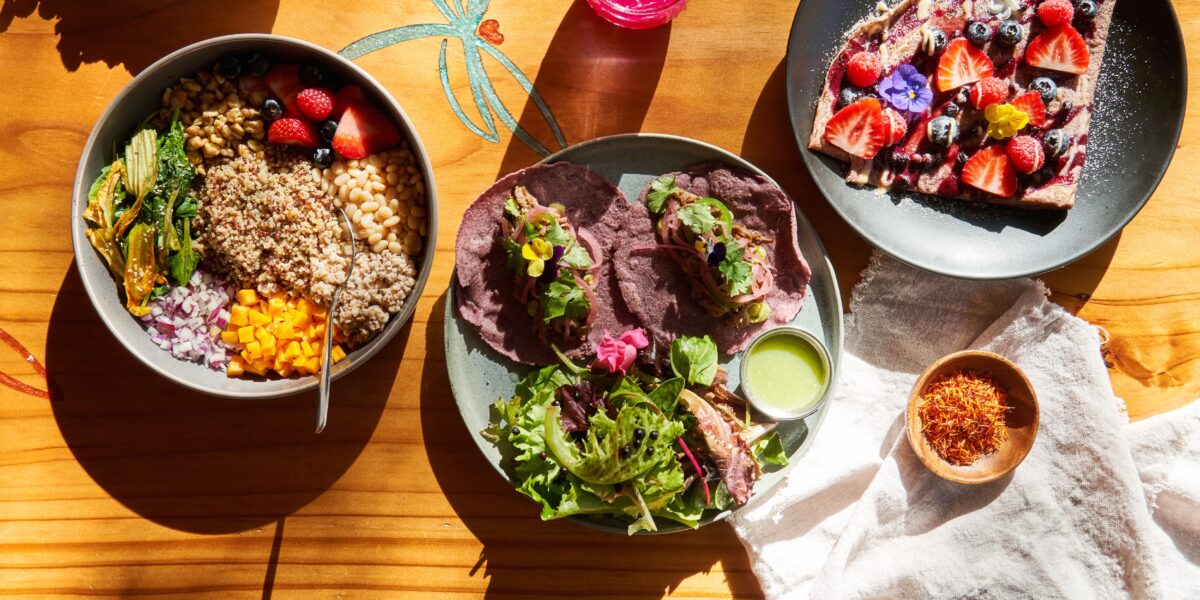
Thomas J. Story
Walking into Crystal Wahpepah’s Oakland restaurant, Wahpepah’s Kitchen, is a vivid feast for all of the senses. Colorful Indigenous murals cover the walls, and the warming aroma of roasting blue corn wafts through the air. Wahpepah’s smile lights up as she speaks about the open pantry that she’s placed at the focal point of the dining room.
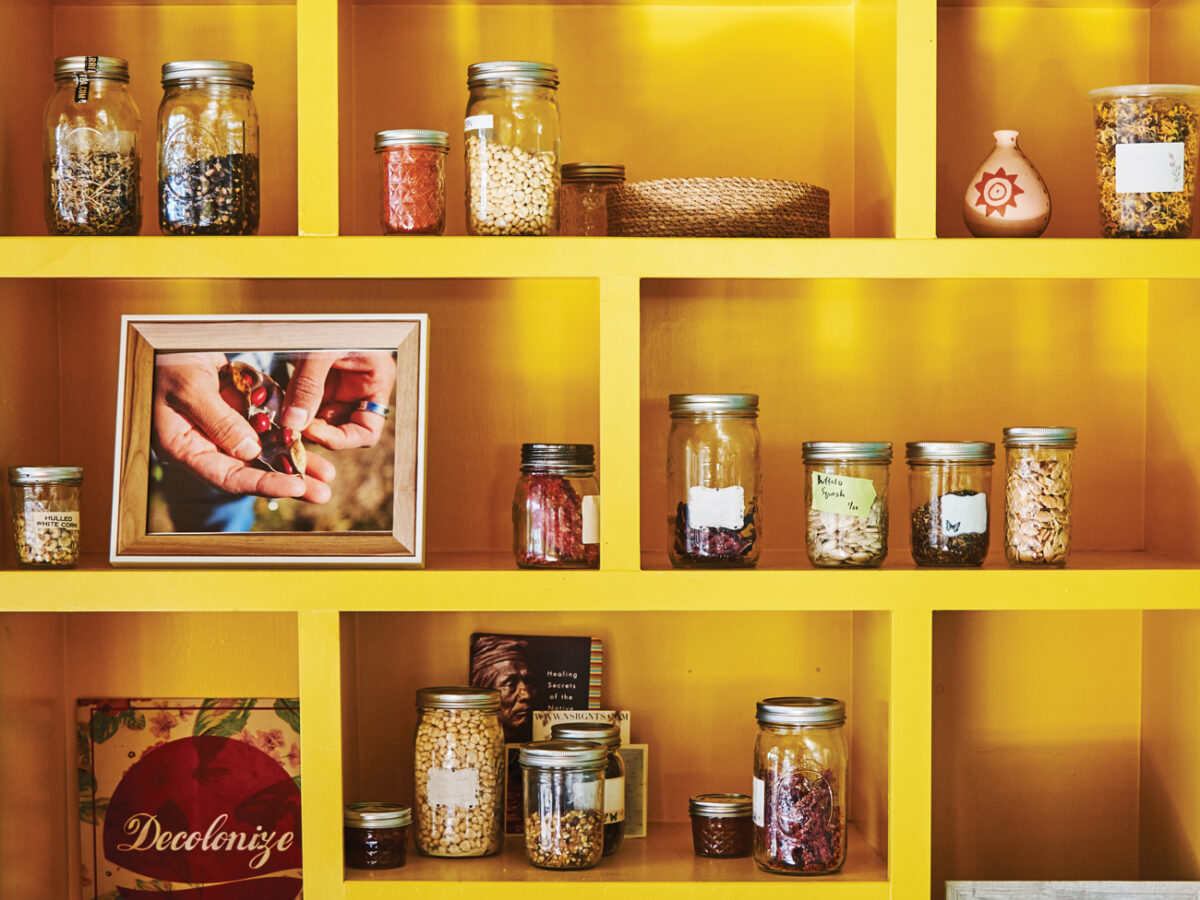
Thomas J. Story
“Some people get excited about shopping for shoes and purses. Me, I get excited over ingredients,” she chuckles.
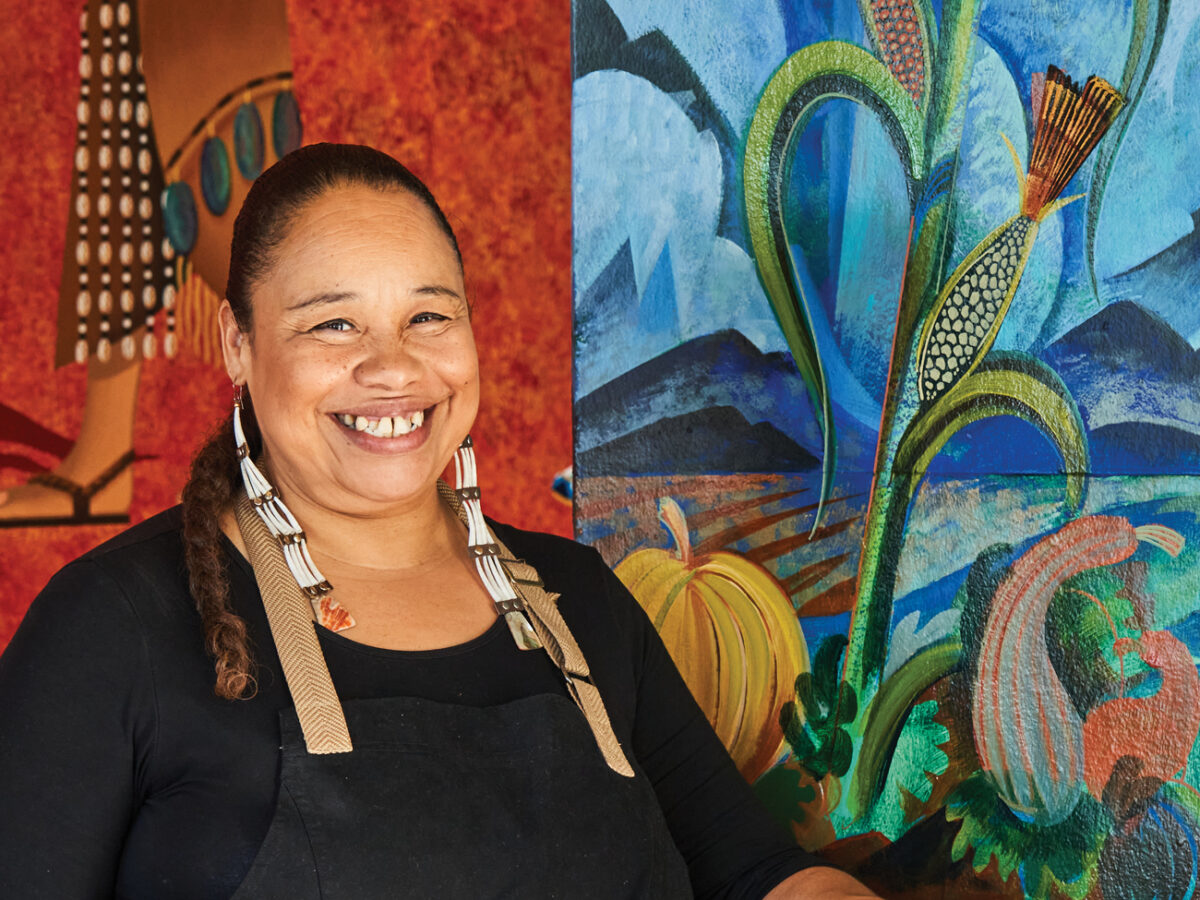
Thomas J. Story
An enrolled member of the Kickapoo nation of Oklahoma, Wahpepah was born and raised in Oakland on Ohlone land, surrounded by a tight-knit, multi-tribal urban community. Through her dishes like three-sister veggie bowls, bison tacos, and acorn crêpes, she’s reframing traditional cooking through a modern, relatable lens with an end goal of empowering the native food sovereignty movement and educating communities about the health benefits of traditional foodways. The shelves are stocked with mason jars loaded with mindfully sourced intertribal foods used in Indigenous cooking spanning North and South America. From Kansas Kickapoo and Seneca white-corn varieties to chokecherry powder from South Dakota, her collection showcases the diverse array of products that mirror the biodiversity and beauty of the land.
Crystal Wahpepah’s Five Favorite Native Ingredients
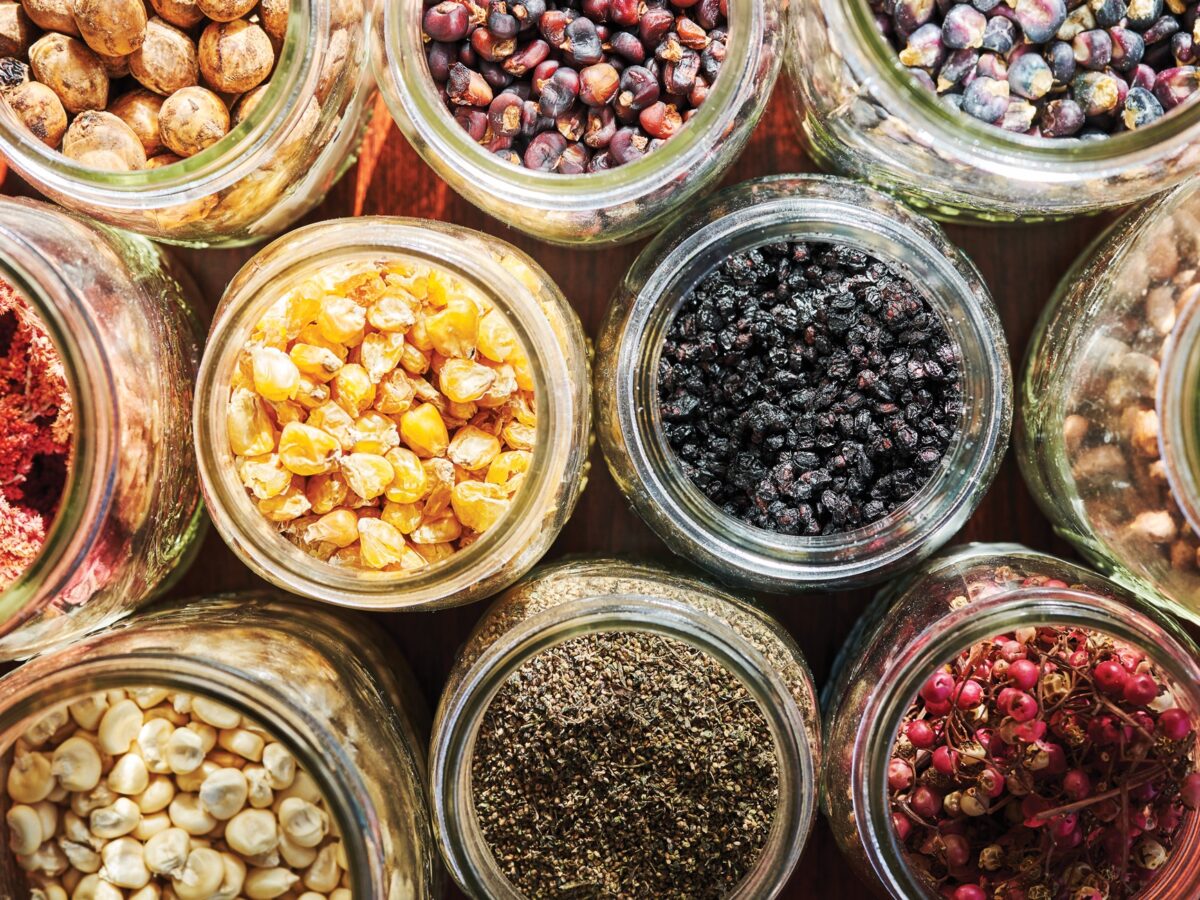
Thomas J. Story
Bay Nuts
The nuts of the California bay laurel tree are edible when roasted, and have long been consumed as a condiment, digestive aid, and stimulant. In addition to being totally rich and delicious, bay nuts also give you a caffeine-like energy boost. The aroma and flavor are somewhat similar to a cross between carob and chicory. “Roast them and prepare it just like a pour-over,” says Wahpepah. “Or purée them and try them rolled into a truffle or brownie.”
Pine Nuts
These soft, edible seeds found in the cones of Northern Californian pines are an incredible source of nutrients, and are rich in monounsaturated fats and vitamin E. The pine’s sap is also traditionally used as a salve or ointment. Wahpepah gathers her own, then roasts them before using them as a topping on everything from soups to salads.
Bay Laurel Leaves
Very common in the Bay Area, the leaves of the California bay laurel tree add a depth to soups and stews not all too dissimilar from bay leaves you might find at the grocery stores. While the latter will likely come from a member of the laurel family in the Mediterranean, the California bay laurel leaves are significantly more pungent and aromatic. It’s important to use the chef’s trick of consistently tasting the dish when seasoning with bay laurel, so that you can remove the leaf once you’ve reached the right depth of flavor without totally overpowering a dish.
Acorns
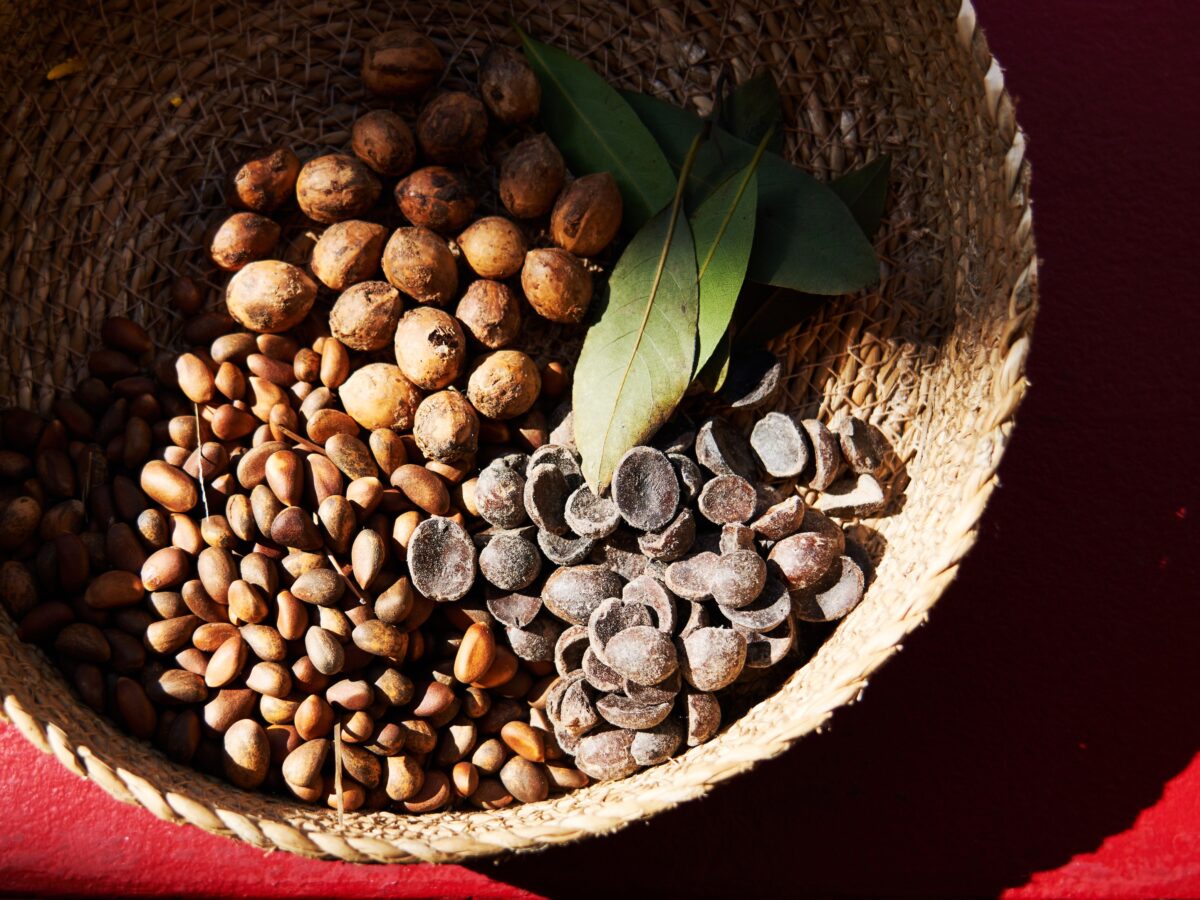
Thomas J. Story
“The valley oak acorn is bread, it’s life,” says Wahpepah. “Anything you can do with wheat or corn, you can do with acorns.” Processing acorn is a bit of a task; it must be washed multiple times in order to eliminate the inherent tannic acid, but it’s well worth the work. At her restaurant, Wahpepah utilizes the tan oak acorn to make a beautiful breakfast crêpe that’s topped with maple cream, seasonal native berries, and a sprinkling of maple sugar.
Rose Hips
Wild roses that grow throughout the Sierra Nevada chaparral are gorgeous to view when in bloom. But the real magic comes when their outer leaves fall, exposing their delicate inner delicate bud. Wahpepah uses them in her chocolate rose hip bars, made with popped amaranth, maple, rich, traditional Mayan chocolate, pecans, and hand-harvested wild rice from the Red Lake Nation in Minnesota. She also makes a rose-hip dressing for salads that uses dried rose hips, Séka Hills olive oil, salt and pepper, and citrus. Rose hips can also be used in teas and are incredibly high in vitamin C, making them a great cold remedy.
Beans, squash, and corn—known as the three sisters in the Indigenous kitchen—are a living example of the culinary adage that what grows together goes together. Planting these items in conjunction, so that the beans climb the corn stalks, allowing the squash room to sprawl out on the ground, is a centuries-old agricultural tradition that not only fixes nitrogen, but protects the soil with shade during the warm summer months.
“The three sisters really represent strength, and are used across Indigenous cultures. It’s regional, and everyone has their own interpretation,” says Wahpepah. “I was raised knowing how that strength is seen not only when you plant them together, but also when you eat them together.”
Growing up in the Bay Area, Wahpepah enjoyed the combination in soups and stews, or sautéed with venison. At her Oakland restaurant, she prepares the three sisters in a modern-style grain bowl, always adorned with seasonal ingredients, maple chile oil, and a punchy vinaigrette using Séka Hills olive oil.
Tips for Making a Three Sisters Bowl at Home
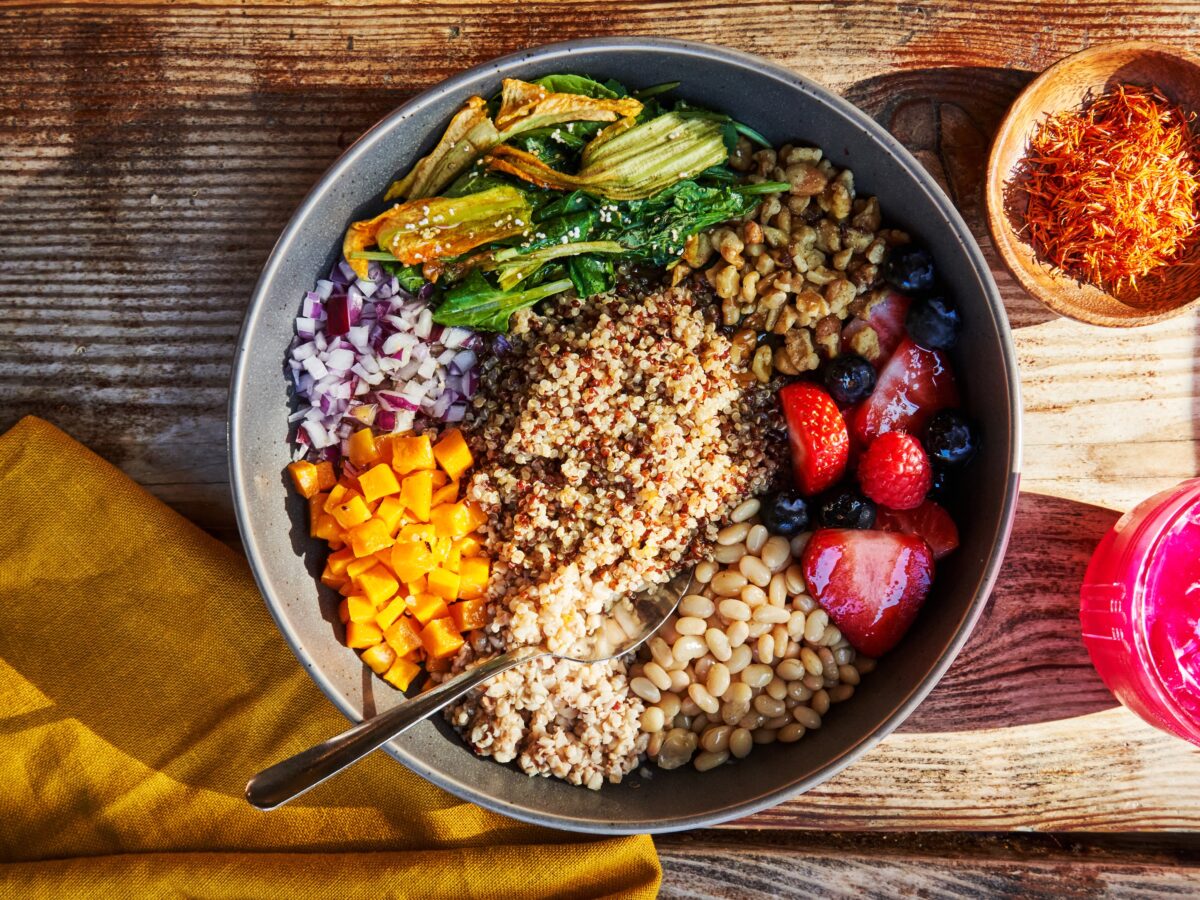
Thomas J. Story
Get Creative
“The three sisters love fruit,” says Wahpepah. “For instance, right now we have pomegranates to add a pop of sweetness.” Dried fruit like dried cranberries also work well. “Don’t take it too seriously,” she says. “It all gets mixed in at the end.”
Go Seasonal
Things tend to blend well that grow together seasonally,” says Wahpepah, who is a regular at local farmers’ markets. “We add apples and beets in the fall, for instance,” she says. There are a wide variety of both winter and summer squashes to utilize, too, so use what’s in season and enjoy experimenting with different varieties.
Use Heirloom
If possible, it’s always best to use dried heirloom beans, taking the time to soak them overnight, versus canned. “I use tepary beans, an old heirloom bean, and if you can get them they’re great. They have a little more character than a pinto bean,” she says. “They’re more fresh and have a vibrance you can taste. Try to go as natural as possible. And of course, if you grow it, even better.”
Wake It Up
Wahpepah loves adding elements of spice and acid to her bowls to enliven the palate. “You have to have something citrusy to lift it up. You can even add orange or lemon,” she says. You can DIY a maple chile oil similar to what she has in the restaurant, or even add a dollop of Calabrian chile paste to kick it up a notch.
Practice Gratitude
“Food can be ceremonial, and it can be a celebration,” says Wahpepah. “Always take a moment and acknowledge where food comes from and the land that it comes from. Everybody’s food has stories, and having that connection, that’s where our healing comes from.”
Read the Current Issue Here!
Get one year of Sunset—and all kinds of bonuses—for just $29.95. Subscribe now!
